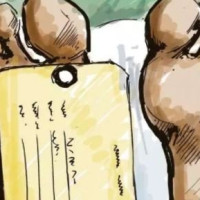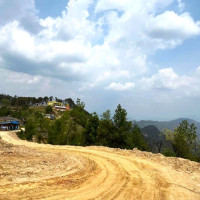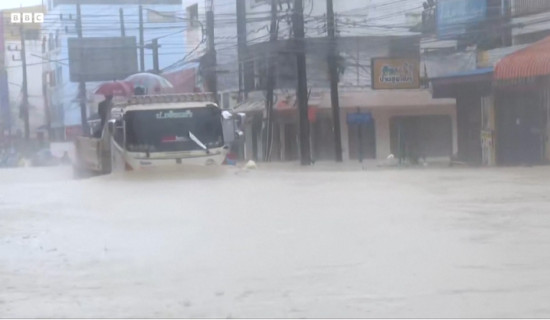- Wednesday, 26 November 2025
Journalistic Voice Thru All Regimes
Nepal’s history is chequered, marked with many ups and downs and also tumultuous events. Several dynasties and clans ruled over Nepal, of which the period of over a century from 1846 to 1951 is known as the ill-famed Rana family oligarchy. Jung Bahadur Rana, backed by his brothers and a few henchmen, orchestrated the ‘Kot Parva’, in which hundreds of courtiers, patricians and officials were killed in the royal court of Kathmandu. It was through the ‘Kot Parva’ that Jung Bahadur Rana captured power, which was the beginning of the Rana family oligarchy that continued to remain a notorious regime for over a century in Nepal until it was overthrown by the popular unrest in 1951. During the Rana regime, only the members of the Rana clan enjoyed power and perks, whereas general people were rendered mere subjects. The Rana period of over a century is known as the darkest period in the history of Nepal.
It is said that there is always a ‘silver lining even in the darkest cloud’. Despite being oppressive, exploitative and discriminatory, some events have taken place during the Rana regime which have gone down as glorious moments in the history of Nepal. One was the abolition of the sati practice, a tradition in which a wife is encouraged to commit suicide by burning herself on the dead husband's funeral pyre. Rana Prime Minister Chandra Sumsher declared the sati practice illegal in 1920. Similarly, slavery or the slave system was widely prevalent in Nepal. Prime Minister Chandra Sumsher Rana abolished slavery in 1926. These two acts are the progressive and reformative decisions of the Rana prime ministers, which must be appreciated despite other notorious and negative traditions of the Rana rulers.
The other positive act of the Rana regime was the publication of the Gorkhapatra in 1901. The Gorkhapatra as a newspaper was first published in Nepal on May 6, 1901. This marks the beginning of the media history of Nepal. Prior to the publication of Gorkhapatra, some other events took place which prepared the background for starting the newspaper in Nepal at the government's initiative.
After taking power, Jung Bahadur Rana visited England in 1850. In London, he saw newspapers and the printing press. The newspapers and media in Britain impressed him. While returning, he brought with him a hand press which was later called the ‘Giddhe press’. This was called ‘Giddhe press’ because it had the emblem of an eagle or vulture (vulture in Nepali is called ‘Giddha’). This was the beginning of the printing press in Nepal. It is said that Jung Bahadur himself wanted to start the publication of a newspaper, for which he brought the printing press from Britain. However, he did not start the publication of the newspaper for reasons not known so far. Jung Bahadur’s successors, like Bam Bahadur, Ranodip, Bir Sumsher and Chandra Sumsher, too, did not start the newspaper project simply because they took the act of raising public awareness and social reforms against the interest of the Rana regime. It was only in Prime Minister Dev Sumsher Rana’s time, or in 1901 the publication of Gorkhapatra started. Dev Sumsher Rana was a reform-minded person and wanted to effect reform measures in other sectors as well. However, Dev Sumsher Rana faced outrage from other members of the Rana clan. For Rana rulers and members, any kind of activities to educate and make people informed and conscious would be tantamount to digging a grave for the Rana regime itself. Thus, other conservative members of the Rana family hatched a plot against Dev Sumsher and ousted him from power. However, the Gorkhapatra publication was given continuity.
Some scholars and researchers are of the view that the Gorkhapatra was first published ten years earlier. But it was not given continuity until 10901. However, it does not have concrete historical proof. Journalist Shreeram Singh Basnet in his book ‘Dimension of Journalism’ writes that ‘Gorkhapatra was first published ten years earlier and discontinued after its first edition. Similarly, scholar late Shiva Regmi, during a conversation with this author, once echoed Basnet’s views. According to Regmi, British Prince (who later became king) Edward VII was to visit Nepal for hunting purposes in Terai. Rana authorities had heard that the British royals had the habit of reading newspapers during breakfast. So Bir Sumsher Rana, the then ruler, arranged the publication of the Gorkhapatra to show that Nepal, too, had a newspaper. But the British prince did not visit Kathmandu, and the Gorkhapatra publication was discontinued.
Gorkhapatra Daily has completed its 124 years and entered its 125th year. Its publication has been uninterrupted since its beginning. Gorkhapatra is the only newspaper in Nepal that has been in operation since its first publication without any disruption. Gorkhapatra is also one of a few newspapers in South Asia that have such a long and continued history.
Gorkhapatra is the state-run publication implying that this paper belongs to all people of Nepal. In other words, all Nepali people are its owners and beneficiaries. The Gorkhapatra Corporation is the government undertaking that publishes the Gorkhapatra daily and other sister publications. The Gorkhapatra is the Nepali language daily newspaper, and The Rising Nepal, an English language daily, is its sister publication. Other magazines published under Gorkhapatra Corporation are Madhuparka literary magazine, Muna magazine for children and Yuva Manch, a youth magazine.
Being a state-owned undertaking, the Gorkhapatra Corporation and its publications have their social responsibility, and it has time and again reiterated this through action. In order to promote and support various languages spoken in the country, the Gorkhapatra daily on a regular basis brings out different editions in different national languages spoken in the country. Gorkhapatra is thus the proud history of Nepali journalism. It has served the nation and witnessed many political ups and downs and regime changes. Gorkhapatra operated under the Rana family oligarchy, Panchayat and the King’s absolute rule, multi-party democracy under a constitutional monarchy and now in a democratic republic. As time and context have changed, Gorkhapatra, too, needs to change, update and innovate itself to live up to the newer situation and context and prove its relevance.
(Lamsal is former editor-in-chief of TRN and former ambassador.)
















